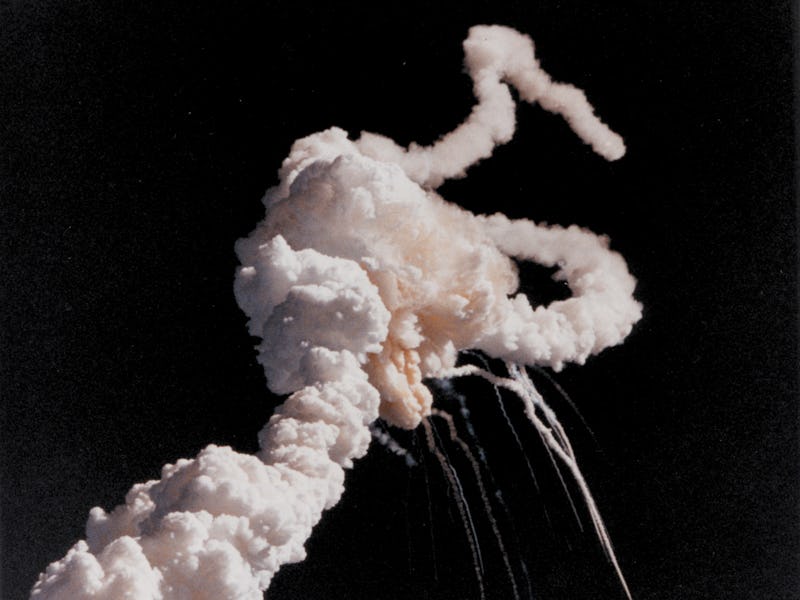Engineer Who Raised Concerns About Challenger Explosion Tells His Story
30 years later, he still blames himself for the shuttle’s demise.

“It’s going to blow up.”
That’s what Bob Ebeling told his wife 30 years ago, on January 27, 1986 — the night before the Space Shuttle Challenger exploded in a fiery blaze that killed all seven NASA astronauts on board.
At the time, Ebeling was an engineer at NASA contractor Morton Thiokol, the manufacturer of the shuttle’s O-ring seals that were part of the shuttle’s solid rocket booster. A subsequent investigation would determine that faulty O-rings were the cause of the *Challenger disaster.
Shocking as the accident was for the rest of the country and world, Ebeling wasn’t too surprised. That only made his grief worse.
Ebeling and four other engineers at Morton Thiokol tried to stop the launch at a contentious pre-launch meeting with company managers and NASA. They had determined that the rubber O-ring seals would not function as they should under cold temperatures. The launch the next day was going to be the coldest on record.
Unfortunately, Ebeling’s managers — pressured by higher-ups at NASA who were trying to adhere to an incredibly busy launch schedule that year — decided to overrule these objections and move ahead with the launch.
After the disaster, Ebeling and another engineer separately gave anonymous reports to NPR detailing what had happened: The data they collected and analyzed, the conclusions they made, what they reported to their superiors, the pushback, and the resulting accident.
Now the 89-year-old Ebeling has come forward and allowed NPR to finally identify him as the world remembers the 30th anniversary of the Challenger explosion.
“I was one of the few that was really close to the situation,” Ebeling told NPR. “Had they listened to me and wait[ed] for a weather change, it might have been a completely different outcome.”
During the ‘80s, NASA was moving forward with an incredibly ambitious launch program to tout the reliability of the shuttles and maintain the nation’s position as the world’s preeminent space power. Unfortunately, that push seems to have persuaded NASA officials to take risky measures that ignored very real concerns.
Though Ebeling did his job in raising these concerns to his superiors, he still feels guilty about what happened, and thinks he should have put forth a stronger argument about what the data was indicating. “I could have done more,” he said. “I should have done more.” To this day, he still feels responsible for what happened.
In the aftermath, NASA would conduct a deep cultural overhaul that would emphasize safety over deadlines. Though errors and mismanagement set the stage for the Challenger accident, the agency’s changes have helped ensure engineers like Ebeling are no longer ignored when there’s something on the line that means the difference between the life and death of astronauts set to travel into space.